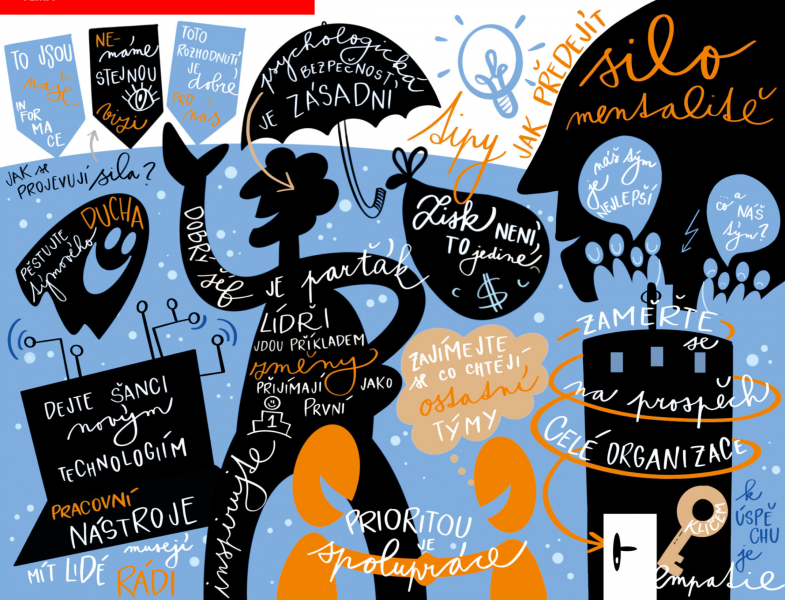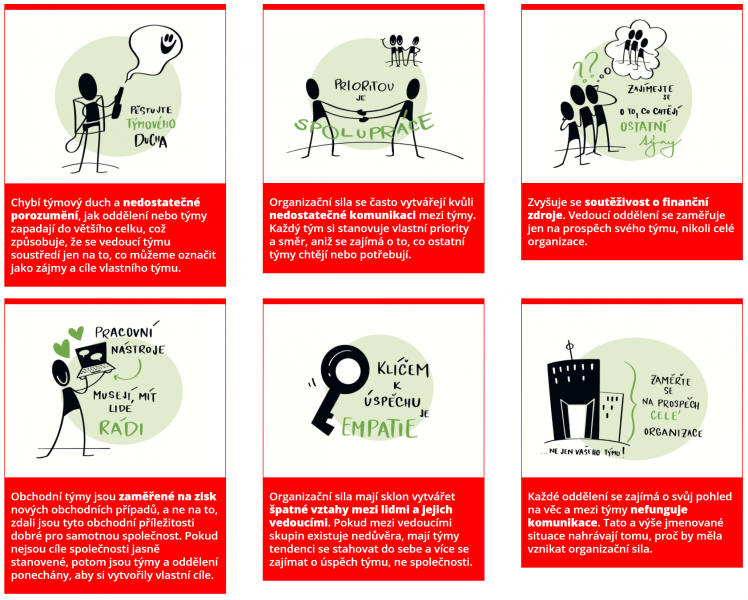
When teams work efficiently like a well-oiled machine, we get the idea that everything is fine. Until we find that teams cannot work effectively with other departments. In fact, it is these departments and teams that become a huge obstacle for the entire organization, the first seeds of the “silo mentality” are created.
We are not aware of the effects of an important social interaction that can compromise overall work productivity. Departments, teams and divisions do NOT cooperate with each other. The response of some executives? “We do NOT cooperate, but we still sell and meet key performance indicators. Therefore, there is no point in making any change.” If your organization does not need happier and more productive people, does not need to improve work performance in these difficult times, then you can stop reading.
I believe you will join the group of people who want their business to succeed. If so, then this article is absolutely essential for you. You will find in it what really disrupts cooperation within the organization, how this problem can be solved, and why the problem of non-collaboration appears more and more often. The reason is the so-called “silo mentality”, described in the book The Silo Effect by the social anthropologist Gillian Tett.
THE MEANING OF SILO MENTALITY
Silos are used on farms to separate different types of bulk materials such as grains, food ingredients, sawdust or wood chips. In agriculture, they are indispensable cylindrical towers, but outside of agriculture they are not so practical. However, “silos” also appear very often in individual departments of organizations and negatively affect teamwork and collaboration. This manifests itself in the way that individual departments begin to collect valuable information only for themselves and are very reluctant to share it with the entire organization.
This happens for many reasons: for example, a power struggle, a lack of trust towards other team members, or due to poor communication. The silo mentality will gradually become a performance killer. When employees are reluctant to communicate with each other, trust and interpersonal relationships are damaged. Organizations lose valuable information and make bad decisions. Customers are gradually switching to competitors due to deteriorating customer support and product quality.
The problem is that until something bad happens, it is hard to tell if it is the silo mentality that plagues your organization. To determine if your team members are affected by the silo mentality, we recommend looking for the following causes.
CAUSES OF THE TERM “SILO MENTALITY”
If you look at the way team members and their leaders communicate and interact, you will usually uncover unwanted behaviours with symptoms of organizational power building. People in departments begin to develop loyalty to their group instead of devoting it across the entire organization.
When silos exist, people are more isolated and distrustful of other departments, which means they do NOT collaborate. Information sharing simply stops. Team members are careful about what they share, are reluctant to participate in joint discussions, and do not communicate. The unfortunate reality is that many organizations create work environments that do not support the growth and development of organizational strengths. While it is really so easy. Focus on the psychological safety of the work environment, which enables people, teams and divisions to cope with uncertainty and conflict in an open way. In a psychologically safe work environment, people like to spend their time, generate ideas immediately and express their concerns openly.
You can learn more about psychological safety in the book The Fearless Organization by Professor Amy C. Edmondson of Harvard Business School.
Fragmented decision-making
Teams influenced by the silo mentality make decisions that benefit only their department, not the organization as a whole. Departments want the best for themselves and can see no reason to deal with the needs of other departments.
Lack of responsibility
It is not clearly defined who is responsible for what when tasks are being solved. Responsibility for the project is transferred across all departments without a sense of specific ownership. If something does not go according to plan, it is always the fault of specific person X or department Y, no one wants to take responsibility.
There are no innovations
Organizations often get stuck on the road to innovation. IT systems still run on Windows XP. Department heads work through the night on papers that pile up on their desks. There seems to be resistance to new technologies that make work easier and more enjoyable. Resistance to change and deeply-rooted resistance become ubiquitous.
Incoherent vision
Management and department heads have different views on how the organization should develop in the future. The sales team requires a new CRM system, but the CEO does not see why, because sales is working great even with the old system. In other words, there is a clash between those at the top of the organizational structure and the people doing the work.
HOW TO OVERCOME THE SILO MENTALITY
Build an empathetic corporate culture
Empathy is the key to effective collaboration between individual departments. You should allow teams to try out roles in other departments for a day or two. You will learn more about other people’s work, you will look at colleagues from a different, clearer perspective. Based on their own experience, teams share ideas with each other, which is one of the most cited benefits of good cross-departmental collaboration. Can you make someone who is not empathetic at least a little bit empathetic? Certainly not. Rather, build an empathetic corporate culture and you will not have to force individuals to change their personalities. When you create an empathetic culture, employees will work with others no matter who they are. You do not have to force them to do anything: that is the power of a good corporate culture.
Tell employees why collaboration is important
Give teams a clear and relevant motivation that gets them excited about why they should work together. If your people are passionate about the vision and purpose of the organization, they will be happy to collaborate. The best way to motivate them is to tell them how they will benefit from working well with other departments. Whatever it is, make collaboration* your number one priority and reward employees for their efforts.
*If I help you in a way that helps me, that is collaboration. If I help you in a way that does not help me, or even requires me to sacrifice something, that is altruism.
Improve communication procedures and policies
First, remove stupid rules that prevent collaboration. One common rule to eliminate forever is the ability to contact people only at certain times of the day or through a certain communication channel (e.g. email only). Such rules are definitely not conducive to cooperation. Stop being afraid of new technologies. Today, there are many collaboration technologies that help people communicate and collaborate from anywhere other than traditional email exchange. Microsoft Teams, Cisco Webex Teams, Google G Suite, Zoom are communication platforms used by many organizations with great success. And you can use them too.
Make sure the tools you provide to employees are really needed, work properly, and people enjoy using them. Communication policies should be reworked depending on what your business needs, for example, clearly describe the ways and compliance with the rules of flexible remote work or agile processes across the entire organization. A communication policy should ultimately facilitate open and friendly interaction between people while allowing the free flow of information between departments.
Be a role model
The last tip is the most important in overcoming the silo mentality in your organization. Leaders must lead by example and be the first to embrace change. If you want your team members to apply the pillars of successful collaboration, you should do the same. Always be a role model. Inspiring cross-departmental collaboration is only achievable if you overcome the silo mentality that affects communication and information sharing. Start following the tips in this article and you will see your team working together quickly and seamlessly.


















